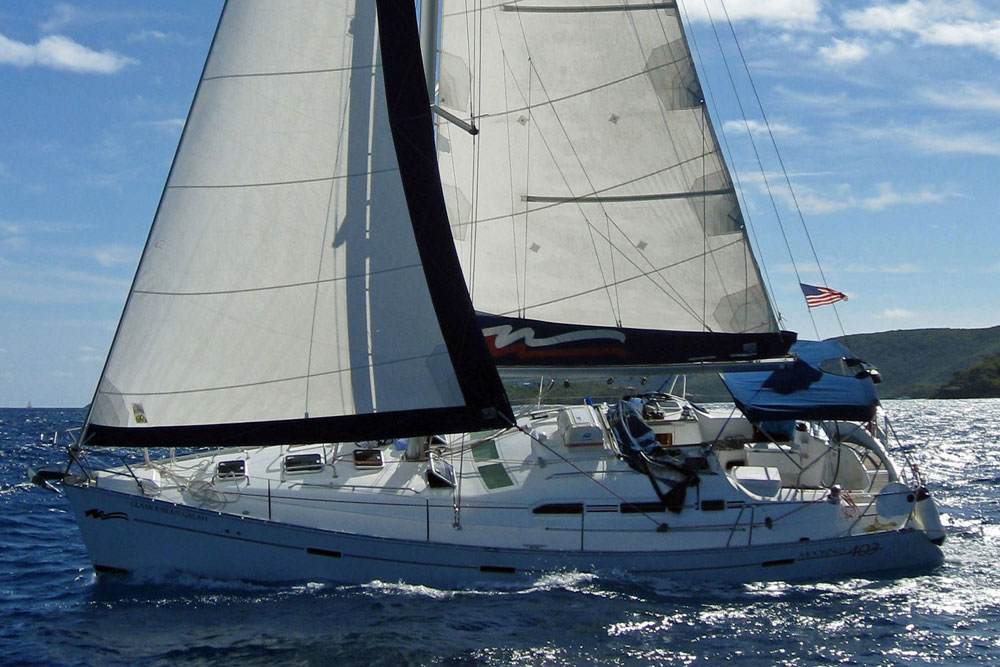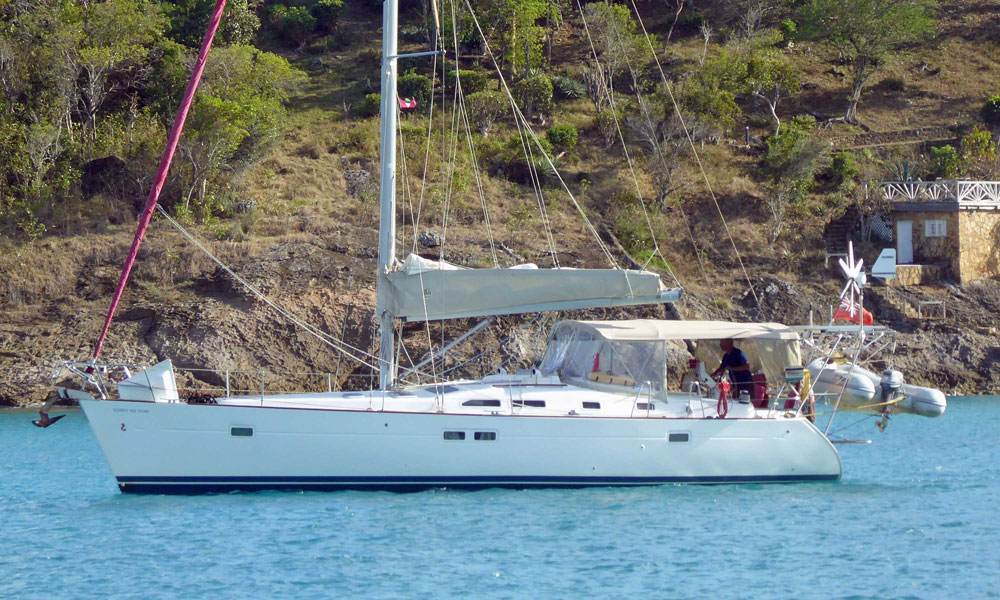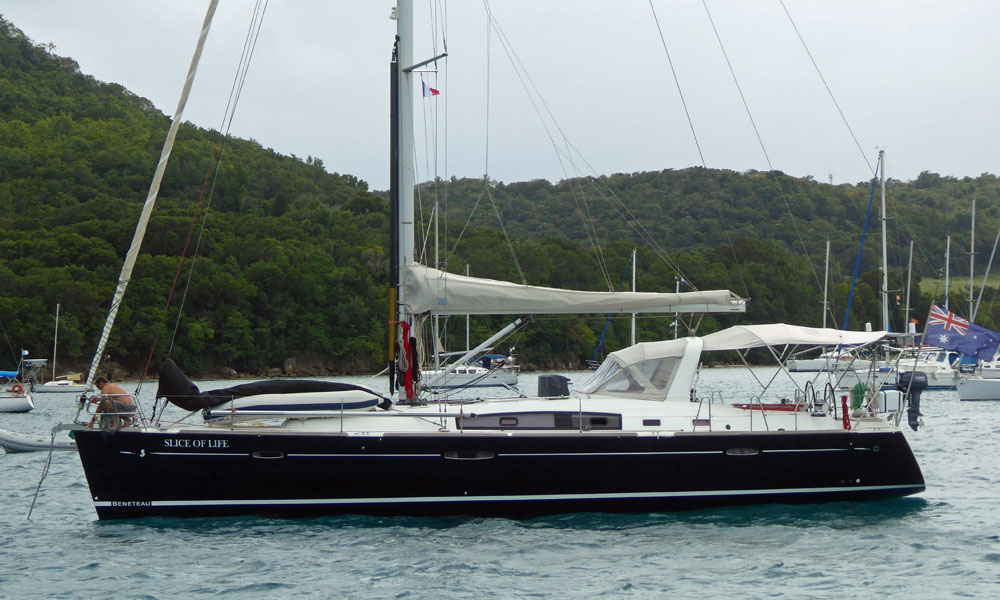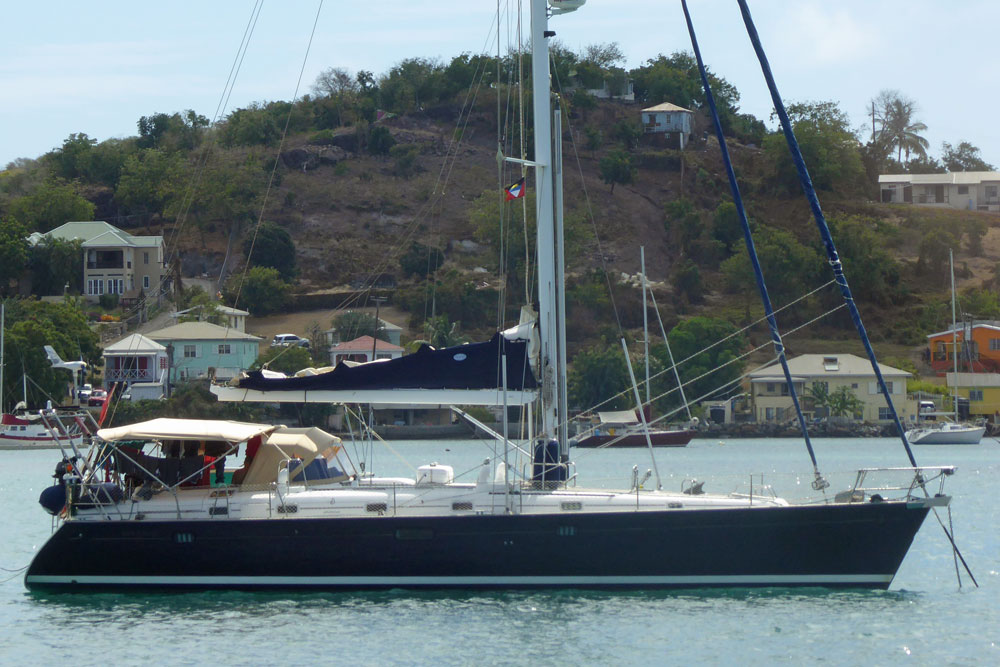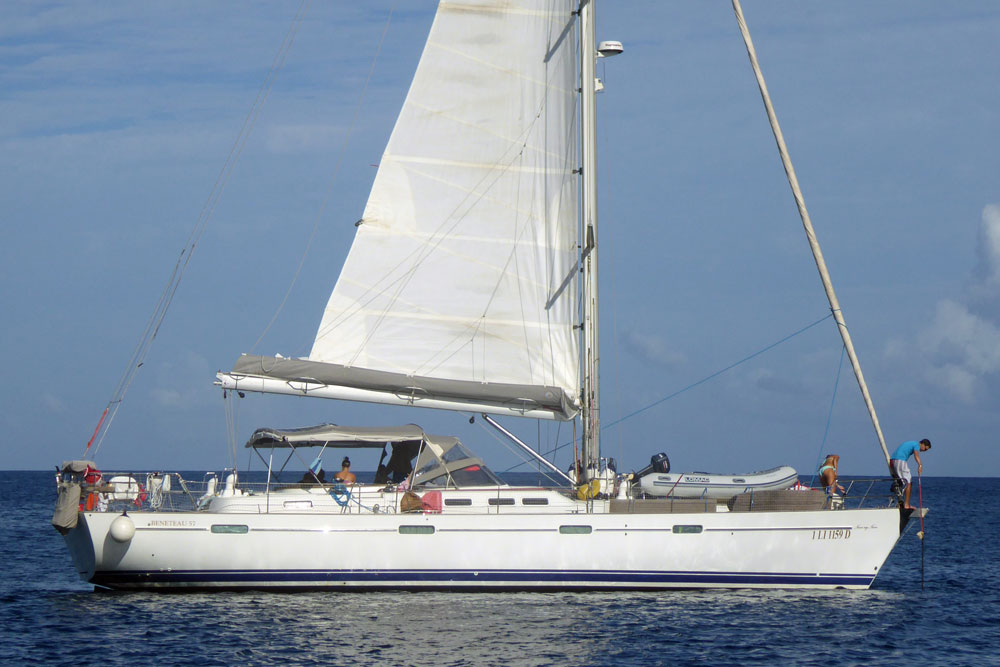- Home
- Cruising Yachts 40' to 45'
- Beneteau 411
The Beneteau 411 Sailboat
Specs & Key Performance Indicators
The Beneteau 411 sailboat is a popular cruising yacht that was designed by Group Finot and built by Beneteau in France from 1997 to 2004.
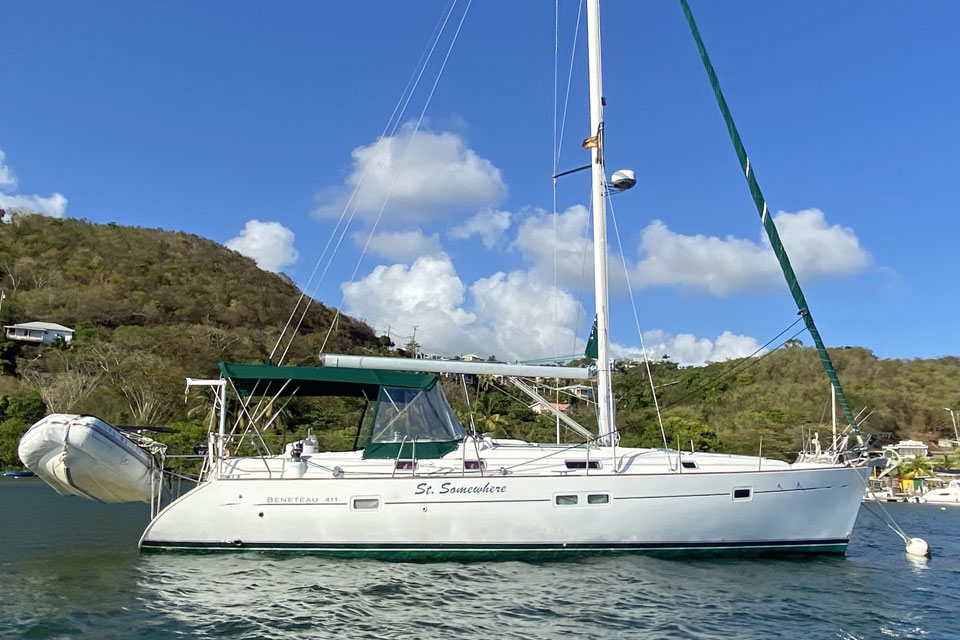 A Beneteau 411
A Beneteau 411Published Specification for the Beneteau 411
Underwater Profile: Bulb fin keel & spade rudder
Hull Material: GRP (Fibreglass)
Length Overall: 41'1" (12.5m)
Waterline Length: 36'11" (11.3m)
Beam: 13'x" (4.0m)
Draft: 4'9" (1.4m)
Rig Type: Masthead sloop
Displacement: 17,196lb (7,800kg)
Water Tank Capacity: 572 litres
Fuel Tank Capacity: 151 litres
Designer: Group Finot
Builder: Beneteau (France)
Year First Built: 1997
Year Last Built: 2004
Number Built: Over 550
Sail Areas & Rig Dimensions
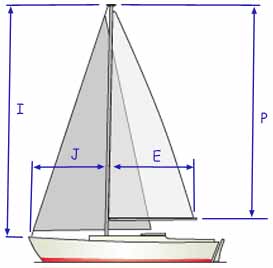
I: 14.6 m (47'11")
J: 5.0 m (16'5")
P: 12.7 m (41'9")
E: 4.5 m (14'10")
Total Sail Area: 64.8 m² (697 ft²)
- Mainsail Area: 28.6 m² (308 ft²)
- Foresail Area: 36.2 m² (389 ft²)
Alternative Versions of the Beneteau 411
There are several options and alternatives:
Draft Options:
- Deep Draft: A standard deep fin keel with a draft of approximately 1.7 meters (5'7").
- Shallow Draft: A shoal draft bulb keel with a draft of approximately 1.4 meters (4'9").
Interior Layout Options:
- Two-Cabin Layout: This layout featured a spacious owner's cabin forward and a guest cabin aft, along with a large saloon and galley.
- Three-Cabin Layout: This version included an additional cabin aft, making it suitable for larger crews or families.
- Four-Cabin Layout: Available in some versions, this layout maximized sleeping accommodations, often used in charter configurations.
The base model 411 also came in two further guises:
Beneteau Oceanis 411 version:
This version is an evolution of the base model, with enhancements aimed at improving cruising comfort and performance. It includes a more luxurious interior, additional amenities, and sometimes a slightly different deck layout to optimize space and usability.
Beneteau Oceanis 411 Clipper version:
The Clipper version is a performance-oriented variant of the Oceanis 411.
Published Design Ratios for the Beneteau 411
- Sail Area/Displacement Ratio (SA/D) of 16.8: This SA/D ratio indicates that the Beneteau 411 has reasonably good performance. It is not under-powered and should perform well under sail in a variety of conditions. In general, boats with SA/D ratios between 16 and 20 have good sailing capabilities, making them suitable for both leisurely cruising and more spirited sailing experiences.
- Ballast/Displacement Ratio (B/D) of 32.0: With a B/D ratio of 32.0, the Beneteau 411 falls below the 40 mark that characterizes very stiff and powerful boats. However, a B/D ratio of 32 still suggests a decent amount of stability and stiffness, meaning the boat will handle winds fairly well but might not be as stiff as boats with a higher B/D ratio. Thus, it offers a balanced compromise between stability and performance.
- Displacement/Length Ratio (D/L) of 153: The D/L ratio of 153 categorizes the Beneteau 411 as a light displacement boat. Light displacement boats are typically easier to drive to their hull speed and tend to have more agile handling characteristics. This means that the Beneteau 411 should be relatively responsive and quick to accelerate, providing a lively sailing experience.
- Comfort Ratio of 22.9: A Comfort Ratio of 22.9 indicates that the Beneteau 411 is a coastal cruiser with moderate stability. As such, it will generally offer a comfortable ride in the conditions typically experienced in coastal cruising but may not be as comfortable in very rough seas encountered during long offshore passages. This ratio reflects a boat that offers a good balance between comfort and performance for family cruising.
- Capsize Screening Formula (CSF) of 2.0: A CSF of 2.0 suggests that the Beneteau 411 is on the threshold for blue water capability. Boats with a CSF of 2.0 or less are generally considered suitable for ocean passages. While this indicates that the boat should handle well in offshore conditions, it is not as inherently resistant to capsize as boats with lower CSF values (which would be better for ocean voyaging).
Overall, the Beneteau 411 is a well-rounded sailing yacht. It offers reasonably good performance, decent stability, a comfortable ride for coastal cruising, and the ability to handle some offshore conditions while prioritizing a mix of comfort and performance suitable for a family cruiser.
Design Ratios: Notes of Caution...
- The Sail Area/Displacement Ratio (SA/D): This ratio provides an estimate of the sail power relative to the boat's weight, which can indicate potential speed in various wind conditions. But it doesn't account for the efficiency of the sail plan, the rigging, or the skill of the crew. Real-world performance can vary significantly based on these factors.
- The Ballast/Displacement Ratio (B/D): This ratio gives an idea of the boat's stability and stiffness, which is crucial for handling and safety. But it doesn't consider the distribution of the ballast or the hull shape, both of which can greatly affect stability. A high B/D ratio alone doesn't guarantee a stable boat if the ballast is poorly distributed.
- The Displacement/Length Ratio (D/L): This ratio helps predict the boat's speed potential and its behaviour in different sea conditions. But it doesn't account for the hull design or the boat's overall weight distribution. Two boats with the same D/L ratio can perform very differently if their hull shapes are different.
- The Comfort Ratio (CR): This ratio estimates the boat's motion comfort in a seaway, which is important for long passages. But it doesn't consider the boat's interior layout, which can also affect comfort. Additionally, personal tolerance to motion varies, so a boat that is comfortable for one person might not be for another.
- The Capsize Screening Formula (CSF): This formula assesses the likelihood of a boat capsizing in heavy seas, which is critical for offshore safety. But it doesn't take into account the boat's handling characteristics or the skill of the crew. A boat with a low CSF can still capsize if poorly handled in severe conditions.
General Limitations
- Static Nature: These ratios are static measurements and don't account for dynamic factors like wave action, wind gusts, or crew actions.
- Simplification: They simplify complex interactions into single numbers, which can be misleading. Real-world performance is influenced by a multitude of factors that these ratios can't fully capture.
- Context: The context in which the boat is used (e.g., coastal cruising vs. offshore racing) can greatly affect how these ratios should be interpreted.
In summary, while these ratios provide valuable insights into the theoretical performance characteristics of a sailboat, they should be used as part of a broader assessment that includes practical experience, sea trials, and expert advice.
Other sailboats in the Beneteau product range include:
Recent Articles
-
Sailboat Wheel Steering Maintenance & Inspection Checklist
Dec 30, 25 02:32 PM
Keep your vessel’s helm responsive and reliable with our expert maintenance checklist. Master cable tensioning and system inspections to avoid mid-passage failures. -
Modern Boat Electronics and the Latest Marine Instruments
Dec 20, 25 05:27 PM
Should sailboat instruments be linked to the latest boat electronics as a fully integrated system, or is it best to leave them as independent units? -
Hans Christian 43: Classic Bluewater Cruiser & Liveaboard Sailboat
Dec 10, 25 04:37 AM
Explore the Hans Christian 43: a legendary heavy-displacement, long-keel sailboat. Read our in-depth review of its specs, design ratios, and suitability for offshore cruising and living aboard.
